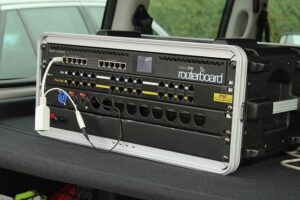In December 2020 Bioforce published “The State of Humanitarian Professions”. Through consultation with nearly 1000 humanitarians, the study provides an invaluable snapshot of humanitarian professions, today. (You can read more about the research here).
Many of the findings of the research will be of considerable value to individuals who are involved in, or want to be involved in, humanitarian work. “The State of Humanitarian Professions” offers deep and current insights into the state of 24 key humanitarian professions and their likely futures.
Through an examination of humanitarian job boards, networks, rosters and information sites, Bioforce’s “The State of Humanitarian Professions” research, published on 11 December 2020, provided some valuable intelligence that is worth delving into. Bioforce identified 24 professions of key importance in the humanitarian sector. Some of these professions are only found in the humanitarian sector though that does not apply to Information and Communication Technology. The Bioforce research provides answers to a number of key questions about ICT:
What are the key characteristics of this profession area?
Information and Communication Technology (ICT) in the Humanitarian sector is predominantly focused on providing operational support to other humanitarian teams. This can include provision and maintenance of ICT hardware and services, such as internet access, as well as the set-up of secure telecommunication networks. It also involves the selection, installation and management of operating systems and software. ICT professionals are responsible for liaison with hardware and software providers, and software developers.
There is also a growing requirement for data security.
Interviewees identified age and gender imbalance amongst humanitarian ICT professionals. They felt there are generally more men than women, and that staff tended to be younger. They also suggested that there is a high proportion of national staff at all levels, including more senior roles.
Interviewees noted that there is a good supply of staff, even though some capacity development is usually required for new starters. They felt that training staff in the organisation can lead to a lower turnover, justifying the investment in professional development. Interviewees did highlight a lack of skilled candidates for ICT management positions, noting that people tend to have either technical skills or management skills, but rarely both.
Which competencies in this profession area are specific to humanitarian work?
Interviewees noted that the technical skills in ICT are the same across the private sector and the humanitarian sector. Perhaps because of this, they observed that people move relatively freely between the humanitarian and private sector, both for job opportunities and for training courses.
The ICT work area also seems to be a work area with a relatively high level of cooperation between private companies and humanitarian organisations. An example of this is the crisis connectivity charter, through which satellite operators provide equipment and support to humanitarian organisations.
What infrastructure exists to support professionalisation in this area?
The central organisation related to ICT in the humanitarian sector is the Emergency Telecommunications Cluster (ETC), established by the IASC. The ETC is a global network of organisations that work together on ICT in humanitarian responses. They coordinate on operational issues, training provision, and contact with private sector organisations.
The ETC offers several general training courses, like ICT Emergency Management and Coordination, but also courses focused on specific technologies like the installation and activation of Hispasat satellite solutions. They also organise a simulation together with the Logistics Cluster, called the Gear Up with a specific ICT centred component called the OpEx Bravo. In addition to this, most organisations have their own internal trainings and support for ICT personnel.
Interviewees were aware of competency frameworks developed for internal use by organisations but did not know of any shared competency frameworks for ICT in the humanitarian sector.
What is changing in this profession area?
Interviewees in ICT noted the following trends in their profession:
 ICT work has been done for a long time, but formerly by Logistics personnel. In the last 10 years, ICT has become a profession on its own. There has been a significant growth in preparedness programmes within the ICT work area, as well as a slight definition change of what is considered to be a preparedness programme. Preparedness in humanitarian ICT used to involve training internal staff and preparing systems for their own organisation. Today, these activities tend to be called ‘emergency readiness’. What is currently meant by ‘preparedness programming’ is enabling governments and communities to be better prepared for an emergency. For example, this could include establishing procedures to reinstall telecommunications networks after a rapid onset disaster. This work is usually done in collaboration with private sector actors in the country affected.
ICT work has been done for a long time, but formerly by Logistics personnel. In the last 10 years, ICT has become a profession on its own. There has been a significant growth in preparedness programmes within the ICT work area, as well as a slight definition change of what is considered to be a preparedness programme. Preparedness in humanitarian ICT used to involve training internal staff and preparing systems for their own organisation. Today, these activities tend to be called ‘emergency readiness’. What is currently meant by ‘preparedness programming’ is enabling governments and communities to be better prepared for an emergency. For example, this could include establishing procedures to reinstall telecommunications networks after a rapid onset disaster. This work is usually done in collaboration with private sector actors in the country affected.
In addition to their support to programmes, ICT professionals are also increasingly providing direct support to affected communities. This is sometimes related to the preparedness trend and can include working with at risk communities on emergency planning and simulation exercises.
